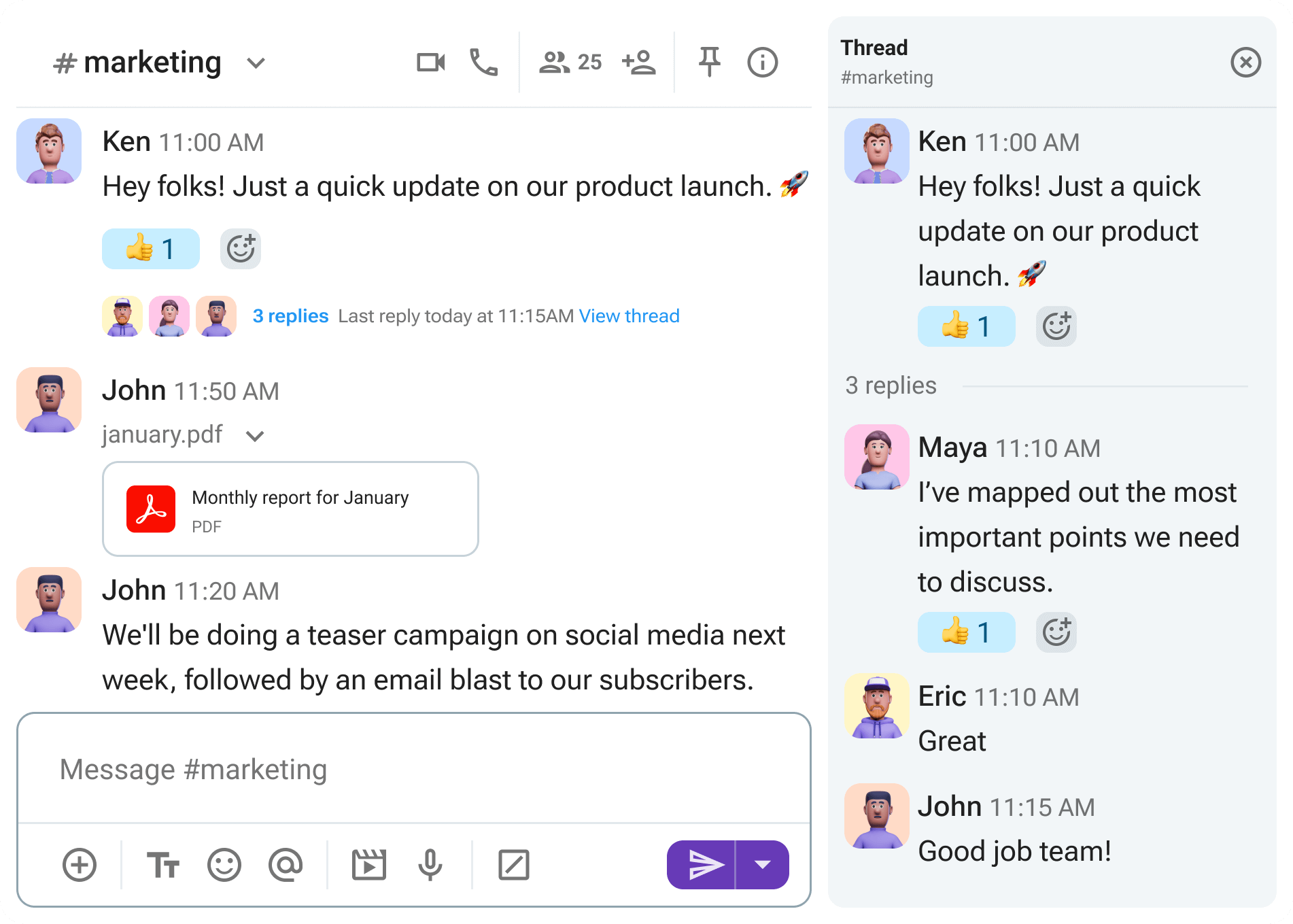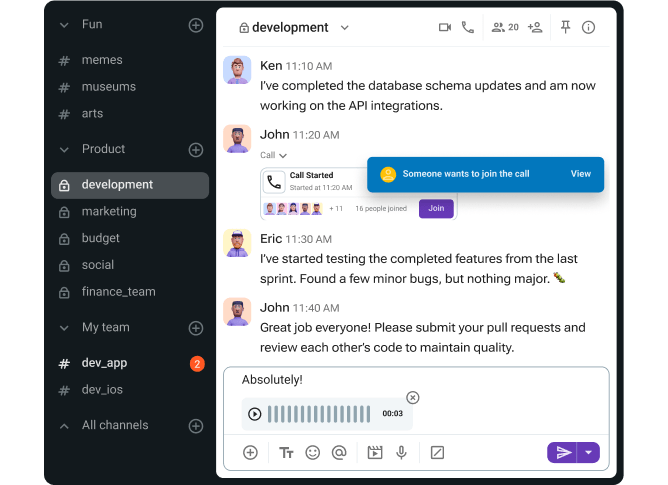As a business owner, you’re probably increasingly concerned with staying on top of growing customer expectations. This gets further complicated by having to keep ahead of the competition and keep up with all the changes and developments in technology.
Luckily, it doesn’t have to be all that complicated and chaotic. You can apply a little strategy called digital transformation and optimize how you adapt, improve, and integrate technology in different aspects of your business.
In this guide, we’ll walk you through everything you need to know about digital transformation, including its benefits and the steps to achieve it.
Let’s dive in!

Table of Contents
What is digital transformation?
Digital transformation is the process of integrating digital technology into all areas of a business, fundamentally changing how it operates and delivers value to customers.
It achieves this shift by using available technology to:
- Improve processes,
- Enhance customer experience, and
- Empower employees.
So, each time you use a digital tool to speed up a process or improve the quality of your team’s work, you’re essentially employing digital transformation.
This could include things like your data analytics, automation processes and tools, AI, and machine learning — anything helping your business adapt to a digital-first world.
What are the benefits of digital transformation?
By now, you’re probably well aware that digital transformation is crucial in taking your business to the next level.
Let’s get a closer look at all the reasons why digital transformation is essential for your business.
#1 Improves efficiency
Digital tools can help you save time and boost your team’s productivity. If you, for example, use a tool to automate repetitive and generic tasks, you can cut costs and save your team’s bandwidth for essential work.
#2 Enhances customer experience
Your customers want a personalized and effortless experience with your business. And they want it yesterday. This is where digital transformation helps you meet customers’ demands with:
- More informed insights,
- Personalized messaging, and
- Omnichannel client communication.
💡 Pumble Pro Tip
To get a better overview of how different tools can help improve your customer relationships and how to pick the right tools for your business, check out our guide on the blog:
#3 Increases agility and flexibility
Reaching and maintaining success often comes with thinking on your feet and being flexible amid chaos. Using digital tools helps you adapt to changing business conditions.
Say you need to make a quick decision about exploring a new business opportunity. You don’t have to waste hours and days on endless email back and forth with your team. Instead, you can take advantage of your team communication app, hop on a video call, and discuss your options in real time with your team. Share your screen and files to get everyone on the same page.

Keep your remote team connected and productive with Pumble
#4 Improves decision making
One of the biggest changes we’ve seen with digital transformation is most certainly the data processing aspect. What once took you ages to collect, analyze, and put to use, is now a click away.
With analytics tools, you can now draw up extensive reports on virtually any subject imaginable and use the data to make informed decisions, thus improving your business processes and fostering growth.
#5 Builds a competitive advantage
When we sum up all the previous benefits, it’s safe to conclude that championing digital transformation puts you ahead of the curve. Having efficient processes, higher customer satisfaction, and the ability to adapt and innovate directly translates to more favorable positioning in the market.
Examples of digital transformation
As we’ve learned in the previous section, you can apply digital transformation for any number of reasons. Whether you want to meet challenging customer needs, improve sales, or entirely disrupt an industry with an innovative business model, you’re using digital transformation to fundamentally change the way you operate as an organization.
Some of the more successful digital transformation examples we’ve seen in more recent years include:
- Transportation companies, such as Uber and Lyft, that use technology to connect independent drivers with customers and create a seamless experience from start to finish.
- Digital streaming services, such as Netflix, that moved from DVD rental to video streaming service that caters to customers’ specific interests.
- E-commerce platforms, such as Amazon, that use data analytics and automation to reshape how we shop, covering everything from how we search for products and explore options, to how we pay, and get the products delivered to our homes.
How to achieve digital transformation?
Understanding the importance of digital transformation is one thing, succeeding in it is a whole different beast.
Luckily, with the right approach, this doesn’t have to be a daunting task.
We’ve prepared some key steps to help guide you through the process.
Let’s break it all down.
#1 Define your goals
First, you need to set objectives to embrace digital transformation.
Ask yourself:
- What are your priorities?
- What do you want to achieve?
- Are you looking to boost your sales, improve customer experience, or launch a new product?
There’s no one-size-fits-all approach to digital transformation, so you need to have your priorities straight before choosing a direction.
Having a defined goal in front of you will help you pinpoint areas of your business that you need to focus on. Consequently, you’ll have a better understanding of the type of tools and technologies you’ll need for the process.
#2 Evaluate your current situation
Take a close look at your current processes, technologies, and company culture. Are there any areas that need improvement in terms of efficiency, quality, or quantity?
Be sure not to rely solely on your own assessment. We as human beings are prone to cognitive biases and, whether we like to admit it or not, we easily make huge mistakes relying on our prejudiced opinions and assumptions.
To avoid falling victim to your unconscious biases, you can engage your team in a quick brainstorming session. All you have to do is post a poll in your team collaboration software and get real-time feedback on where you stand. Continue the discussion in channels or use threads to avoid losing sight of important points.

Understanding where you stand will help you identify what needs to change and how the available tools can bridge the gaps.
#3 Apply the right tools
Not all technologies are created equal, so it’s important to choose the tools that align with your specific objectives. This could involve anything from adopting AI and machine learning to automate generic tasks in your customer support, to replacing outdated and inefficient email with more powerful, digital, all-in-one communication tools.
Of course, you should try not to do it all at once. Start small, test the waters with a few selected affordable options to see what works, and add more from there as you scale up.
If you’re not sure where to start when picking the tools, here are some key categories you can explore to kick things off:
- Communication and collaboration tools help you transform how you communicate and work together with your team, becoming your team’s digital HQ.
- Customer relationship management (CRM) systems give you a clearer picture of your customer data, including the entire interaction history.
- Cloud computing platforms let you adopt new and innovative technologies and business processes without investing in expensive hardware and software.
- Project management tools let you adjust project plans in real time, enabling you to adapt quickly to changing circumstances.
- Data analytics tools allow you to make data-driven decisions and changes based on data analysis of customer preferences, purchases, and pain points, resulting in better customer understanding and satisfaction.
- Automation tools help you streamline repetitive tasks such as time tracking, reporting, invoicing, and time off management, enhancing efficiency and accountability.
💡 Pumble Pro Tip
To get a better understanding of why email and digital transformation don’t go hand in hand, be sure to check out our blog post that goes into detail on the topic:
Move your team communication to Pumble and transform how you communicate
#4 Get your team on board
Don’t forget that as much as digital transformation is about technology, it’s also about the people and the culture you create.
Your teammates are the driving force behind any technology and process, so ensure they are on board with the adoption and equipped for the job.
You can support your team to do their best by providing training and resources to help them learn the new technology and adjust to the digital mindset.
To allow for full flexibility and distance learning, you can record these lessons either in the form of video messages or as a full meeting recording session. Also, be sure to share documents and recordings with valuable resources in your team channels.

This way, you’re:
- Keeping everything on file and accessible for everyone,
- Allowing your remote teams to pick things up at their own pace, and
- Supporting your team learning with practical video content.
#5 Learn, improve, repeat
One thing to remember about digital transformation is that it’s not a one-and-done project, unfortunately. Accepting it as an ongoing journey can help you continue implementing it successfully.
To ensure the long-term success of your digital transformation efforts, you can repeat the following 3-step, failproof cycle:
- Regularly monitor your progress to get more accurate insight into your current state.
- Collect feedback to run pulse checks of your team and make more informed decisions.
- Adjust as you go. Keep up with the current trends and technologies and pick what works best for you to ensure your business remains competitive.
Get started on your digital transformation journey
Digital transformation is way past being an option. To stay ahead and thrive in your industry nowadays, you need to embrace new digital technology and strategies.
Although the process may seem daunting at first, it doesn’t have to be too overwhelming. Just take it step-by-step using our guide above and invest in the right tools to set your business up for long-term success.
Ready to embark on your digital transformation journey and future-proof your business?
Take the next step in your communication with Pumble and transform how your team connects and works together!
And, to unlock your team’s full potential, explore CAKE.com’s Productivity Bundle, and increase your competitive advantage.








